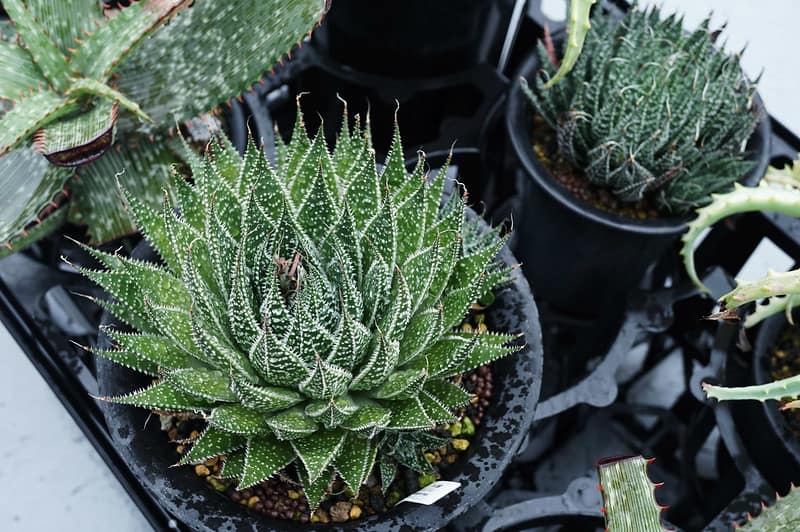Aristaloe Aristata “Lace Aloe”, formerly known as aloe aristata, is a small and hardy succulent plant, very popular as an indoor plant.
It is commonly known as torch plant, lace aloe, guinea fowl aloe or torch plant.
The torch plant is a succulent grouping without stems, up to 30 cm high, with thick rosettes of stubby leaves, spear-shaped, serrated,
With a white border, the plant is a dark green color up to 10 cm long, with small white spots and soft white spines, particularly below the sheet.
In the fall, it produces terminal panicles up to 50cm high from 2 to 6 twigs with orange-red cylindrical flowers up to 4cm long.
Tips to take care of the Aristaloe aristata “Lace Aloe”
Light
It requires bright light. It does not thrive if it is permanently placed at a considerable distance from a window if it is being grown indoors.
Soil
Dry and well-drained sandy soils are suitable for these plants. Drainage soil free of very fine sand will keep you healthy.
Use a mixture of soil for pots ideal for succulents and cacti or add coarse sand to improve soil drainage if it is being grown in an outdoor garden.
Temperature
Torch plants grow well at normal ambient temperatures and tolerate dry air.
However, to encourage flowering, it is better to give plants a rest
short winter at a temperature of no more than 10 c.
Irrigation
During the period of active growth, water abundantly as many times as necessary to keep the potting mixture completely moist.
During the rest period the water adds only enough to prevent the soil mixture from drying out. Do not allow water to settle on rosettes and leaves of plant.
Fertilization
You can fertilize the torch plant very little, do it during the period of active growth.
Transplant or change of pot
Use a potting mix ideal for succulents. Most torch plants should be moved to a larger pot every spring.
Keep these potted plants that are shallow preferably.
Once the maximum size of the plant has been reached and there is no need for a pot of larger, the plants should be placed in a mixture of fresh pot once a year.
To prevent rot, make sure that these plants have leaves Basals never bury themselves more deeply than they were before.
A pinch of coarse sand on the surface of the potting mix helps prevent rotting points where the fleshy leaves of these stemless plants touch the ground.
Propagation
The torch plant produces offsets that can be taken from the base of a plant in early summer.
These little new rosettes are often attached to the womb for a short underground stolon and they may have few roots, which must be preserved for propagation.
Because of the compensations very smSmall are difficult to root, they should not be removed for planting until their leaves have begun to open in the characteristic rosette form.
The news offspring will take root in 2 to 3 weeks in the standard potting mix if thick sand is sprayed at the base of the rosette to prevent it from rotting.
Until the compensations are well established, they should be provided with bright light without direct sunlight and they should be watered just enough to moisten the mixture of potting soil allowing the upper 2/9 of the mixture to dry between waterings.
It can also be spread by seeds sown in a warm environment as soon as they are ripe.
Plagues and diseases
This problem, as in most succulent plants, is more likely to be caused by improper irrigation.
A torch plant that is correctly watering can withstand most pests and diseases. Withering is the result of incorrect irrigation. The yellowed leaves accompanied by base rot is the result of excessive watering of plants that are kept in cold winter conditions.
Flour cochinills and root bugs can be annoying.
The first hides in the cracks of the rosette foliage and the second generally they bury themselves in the pots.
To treat this remove visible insects with a toothpick or a damp cloth or clean the foliage with a small brush and rigid submerged in methylated alcohol or with an insecticide solution.
Then spray all the top growth of the plant with an appropriate pesticide.
Alternatively, place the granules of a systematic pesticide in the potting soil mixture.
During the next month, examine the plants weekly to detect traces of reinfestation.
Scale insects can also infest this plant.
They can be easily controlled by physical lamination, high pressure water jet washing or scraping with cotton swabs or by chemical control with the appropriate pesticide.
